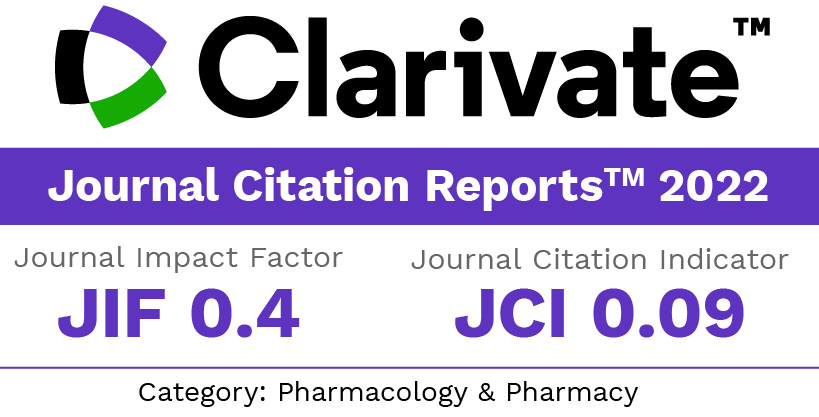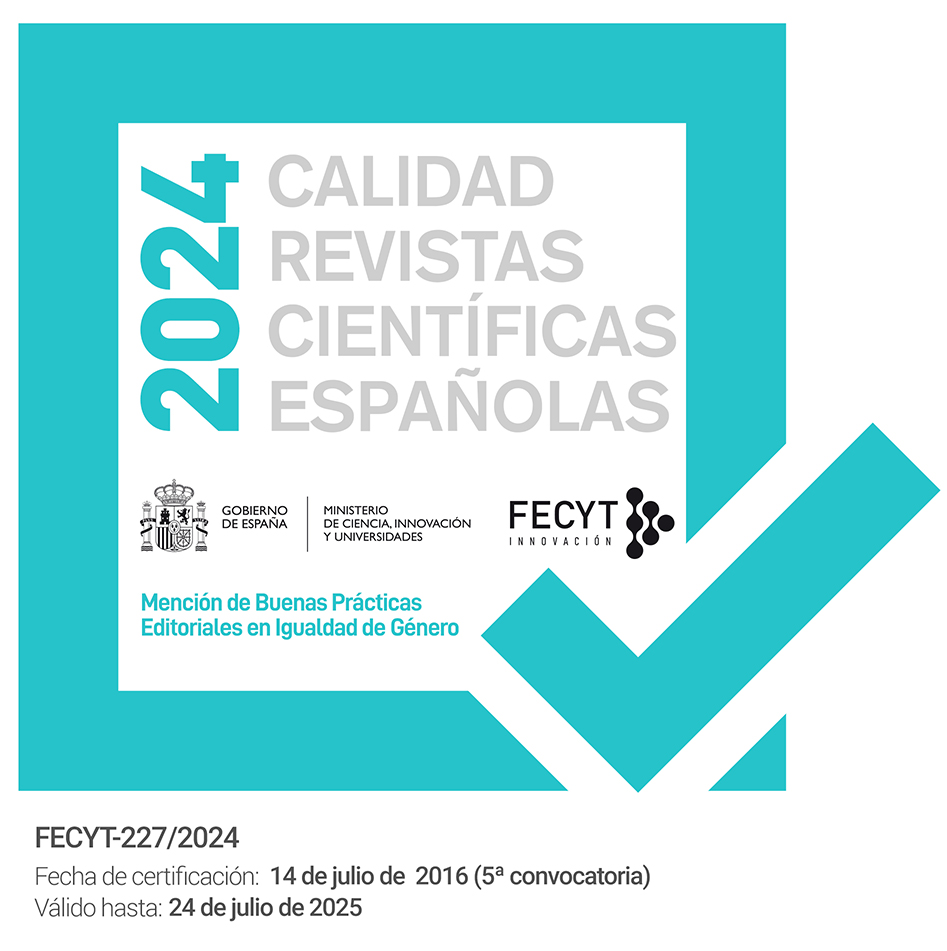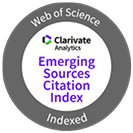Citotoxicidad y Efecto Cicatrizante de Disolventes Eutécticos Naturales a Base de Alcanfor y Mentol Contra la Línea Celular de Carcinoma Epidermoide Humano (A431)
DOI:
https://doi.org/10.30827/ars.v66i4.34110Palabras clave:
Alcanfor; mentol; disolvente eutéctico profundo natural; línea celular A431; Ensayos de supervivencia celular; Actividad de cicatrización de heridas in vitroResumen
Introducción: El cáncer de piel es un problema de salud grave, y encontrar tratamientos eficaces es crucial. Este estudio investigó los efectos de un disolvente eutéctico profundo natural a base de alcanfor y mentol sobre células de carcinoma epidermoide humano A431, un modelo para el cáncer de piel.
Método: Se realizó un ensayo con bromuro de 3-(4,5-dimetiltiazol-2-il)-2,5-difeniltetrazolio para evaluar la viabilidad celular y la citotoxicidad mediante la medición de la absorbancia a 570 nm. Se determinaron los valores de densidad óptica y se calculó la viabilidad celular en forma de porcentaje. Además, se llevó a cabo un ensayo de rasguño in vitro para evaluar el impacto del disolvente eutéctico profundo natural a base de alcanfor y mentol en la migración celular.
Resultados: Los resultados revelaron una disminución dependiente de la concentración tanto en los valores de densidad óptica como en la viabilidad celular, con una concentración inhibitoria (IC50) de 311,7 µg/ml. El grupo tratado mostró una reducción significativa en el área de la herida en comparación con el control, lo que sugiere posibles efectos anti migratorios. Dado que la migración celular es clave en la propagación del cáncer, este hallazgo podría ser importante.
Conclusión: En conclusión, estos hallazgos destacan las propiedades citotóxicas e inhibidoras de la migración del disolvente eutéctico profundo natural a base de alcanfor y mentol, lo que respalda su potencial como agente terapéutico contra el cáncer de piel. Estos resultados subrayan el potencial de los compuestos naturales en el tratamiento del cáncer. Se necesita más investigación para comprender el mecanismo de acción del disolvente eutéctico profundo natural a base de alcanfor y mentol y confirmar estos resultados en sistemas biológicos más complejos.
Descargas
Citas
Wang M, Gao X, Zhang L. Recent Global Patterns in Skin Cancer Incidence, Mortality, and Prevalence. Chin Med J. 2025;138(2):185–192. https://doi.org/10.1097/CM9.0000000000003416
Griffiths SK. The Effects of Cis-9, Trans-11 Conjugated Linoleic Acid on the Proliferation of A431 Epidermoid Carcinoma Cells. (Master’s thesis), University of Chester, United Kingdom, 2018. https://chesterrep.openrepository.com/handle/10034/621872 (accessed 2025-03-05).
Niehus SE, Tran DDH, Mischak M, Koch A. Colony-Stimulating Factor-1 Receptor Provides a Growth Advantage in Epithelial Cancer Cell Line A431 in the Presence of Epidermal Growth Factor Receptor Inhibitor Gefitinib. Cellular Signalling. 2018;51:191–198. https://doi.org/10.1016/j.cellsig.2018.07.014
Voloshin N, Tyurin-Kuzmin P, Karagyaur M, Akopyan Z, Kulebyakin K. Practical Use of Immortalized Cells in Medicine: Current Advances and Future Perspectives. Int J Mol Sci. 2023:24(16):12716. https://doi.org/10.3390/ijms241612716
Kaur G, Dufour JM. Cell Lines: Valuable Tools or Useless Artifacts. Spermatogenesis. 2012;2(1):1–5. https://doi.org/10.4161/spmg.19885.
Monteiro H, Paiva A, Duarte ARC, Galamba N. Structure and Dynamic Properties of a Glycerol–Betaine Deep Eutectic Solvent: When Does a DES Become an Aqueous Solution? ACS Sustainable Chem Eng. 2022;10(11): 3501–3512. https://doi.org/10.1021/acssuschemeng.1c07461
Raja Sekharan T, Tamilvanan S, Rajadurai S, Ibrahim SM, Kavipriya K. Development of Ibuprofen-Loaded Emulsion from Eutectic Mixture and Eudragit RL 100. PharmaTutor. 2019;7(7):7–13.
Raja Sekharan T, Margret Chandira R, Rajesh SC, Tamilvanan S, Vijayakumar CT, Venkateswarlu BS. Stability of Curcumin Improved in Hydrophobic Based Deep Eutectic Solvents. Res J Pharm Technol. 2021;14(12):6430–6436. https://doi.org/10.52711/0974-360X.2021.01112
Raja Sekharan T, Margret Chandira R, Rajesh SC, Tamilvanan S, Vijayakumar CT, Venkateswarlu BS. pH, Viscosity of Hydrophobic Based Natural Deep Eutectic Solvents and the Effect of Curcumin Solubility in It. Biointerface Res Appl Chem. 2021;11(6):14620–14633. https://doi.org/10.33263/BRIAC116.1462014633
Raja Sekharan T, Katari O, Ruhina Rahman SN, Pawde DM, Goswami A, Margret Chandira R, Tamilvanan S. Neoteric Solvents for the Pharmaceutical Industry: An Update. Drug Discov Today. 2021;26(7):1702–1711. https://doi.org/10.1016/j.drudis.2021.03.005
Raja Sekharan T, Margret Chandira R, Rajesh SC, Tamilvanan S, Vijayakumar CT, Venkateswarlu BS. Deep Eutectic Solvents as an Alternate to Other Harmful Solvents. Biointerface Res Appl Chem. 2022;12(1):847–860. https://doi.org/10.33263/BRIAC121.847860
Paiva A, Craveiro R, Aroso I, Martins M, Reis RL, Duarte ARC. Natural Deep Eutectic Solvents – Solvents for the 21st Century. ACS Sustainable Chem Eng. 2014;2(5):1063–1071. https://doi.org/10.1021/sc500096j
Kowalski S, Karska J, Tota M, Skinderowicz K, Kulbacka J, Drąg-Zalesińska M. Natural Compounds in Non-Melanoma Skin Cancer: Prevention and Treatment. Molecules, 2024;29(3):728. https://doi.org/10.3390/molecules29030728
Singh H, Kumar R, Mazumder A, Salahuddin, Yadav RK, Chauhan B, Abdulah MM. Camphor and Menthol as Anticancer Agents: Synthesis, Structure-Activity Relationship and Interaction with Cancer Cell Lines. Anti-Cancer Agents in Medicinal Chemistry-Anti-Cancer Agents 2023;23(6):614–623. https://doi.org/10.2174/1871520622666220810153735
Ekambaram R, Saravanan S, Selvam N, Dharmalingam S. Statistical Optimization of Novel Acemannan Polysaccharides Assisted TiO2 Nanorods Based Nanofibers for Skin Cancer Application. Carbohydr Polym Technol App. 2021;2:100048. https://doi.org/10.1016/j.carpta.2021.100048
Khan F. Chemical Profiling and Toxicological Assessment of Atmospheric Aerosol Using Human Lung Cells, University of North Carolina at Chapel Hill, USA, 2021. https://rcin.org.pl/ichf/Content/233754/Khan%20Faria%20PDF.pdf (accessed 2025-03-08).
Rolke W, Gongora CG. A Chi-Square Goodness-of-Fit Test for Continuous Distributions against a Known Alternative. Comput Stat. 2021;36(3):1885–1900. https://doi.org/10.1007/s00180-020-00997-x
Bahar E, Yoon H. Modeling and Predicting the Cell Migration Properties from Scratch Wound Healing Assay on Cisplatin-Resistant Ovarian Cancer Cell Lines Using Artificial Neural Network. Healthcare. 2021;9(7): 911. https://doi.org/10.3390/healthcare9070911
Benov L. Improved Formazan Dissolution for Bacterial MTT Assay. Microbiol Spectr. 2021;9(3):e01637-21. https://doi.org/10.1128/spectrum.01637-21
Cappiello F, Casciaro B, Mangoni MLA. Novel In Vitro Wound Healing Assay to Evaluate Cell Migration. J Vis Exp. 2018;133: 56825. https://doi.org/10.3791/56825
Ikegame S, Siddiquey MNA, Hung CT, Haas G, Brambilla L, Oguntuyo KY, Kowdle S, Chiu HP, Stevens CS, Vilardo AE, Edelstein A, Perandones C, Kamil JP, Lee B. Neutralizing Activity of Sputnik V Vaccine Sera against SARS-CoV-2 Variants. Nat Commun 2021;12(1):4598. https://doi.org/10.1038/s41467-021-24909-9
Descargas
Publicado
Cómo citar
Número
Sección
Licencia
Derechos de autor 2025 Raja Sekharan, Tamilvanan Shunmugaperumal, Krishna Reddy

Esta obra está bajo una licencia internacional Creative Commons Atribución-NoComercial-CompartirIgual 4.0.
Los artículos que se publican en esta revista están sujetos a los siguientes términos en relación a los derechos patrimoniales o de explotación:
- Los autores/as conservarán sus derechos de autor y garantizarán a la revista el derecho de primera publicación de su obra, la cual se distribuirá con una licencia Creative Commons BY-NC-SA 4.0 que permite a terceros reutilizar la obra siempre que se indique su autor, se cite la fuente original y no se haga un uso comercial de la misma.
- Los autores/as podrán adoptar otros acuerdos de licencia no exclusiva de distribución de la versión de la obra publicada (p. ej.: depositarla en un archivo telemático institucional o publicarla en un volumen monográfico) siempre que se indique la fuente original de su publicación.
- Se permite y recomienda a los autores/as difundir su obra a través de Internet (p. ej.: en repositorios institucionales o en su página web) antes y durante el proceso de envío, lo cual puede producir intercambios interesantes y aumentar las citas de la obra publicada. (Véase El efecto del acceso abierto).
























